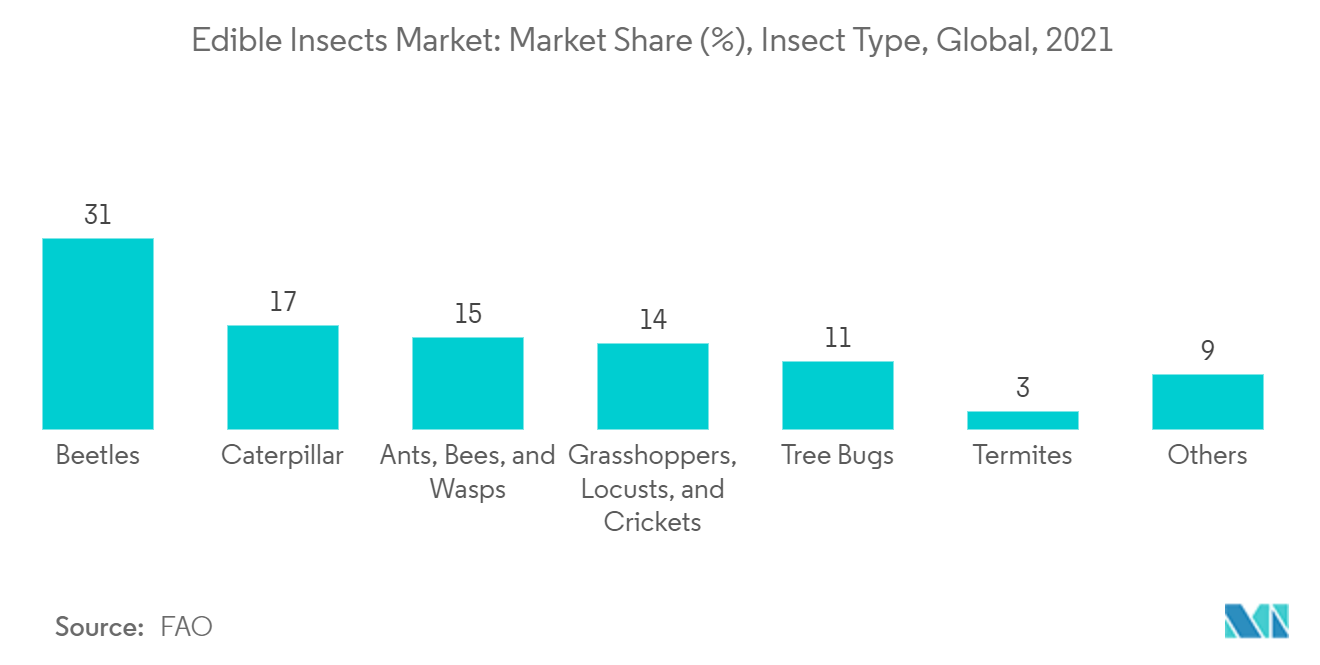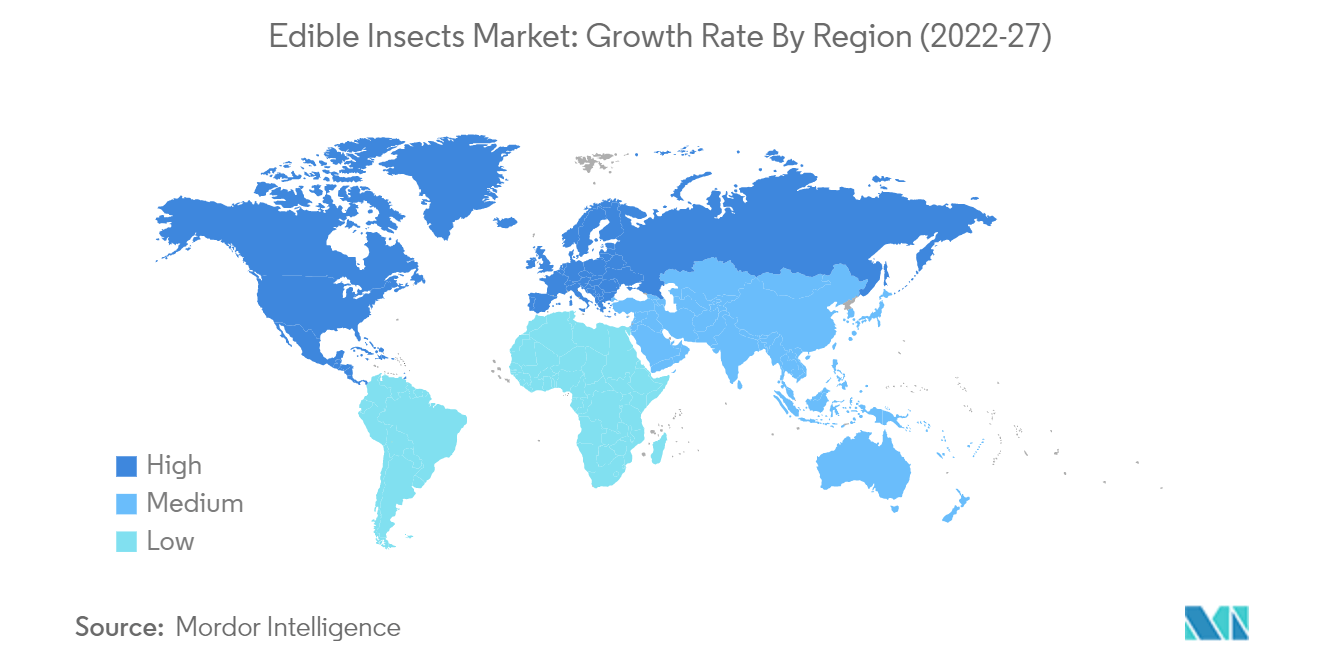Market Trends of Edible Insects Industry
Easy Availability and High Protein Content in The Edible Insects
The accessibility and affordability of edible insects are high in the market. They can be easily cultivated, procured, and incorporated into the daily diet as additives in various forms or as a whole, thereby enhancing the overall nutritional quality of the food. In addition, these insects exhibit minimal processing operations during post-harvest, thus providing a highly economical alternative to animal-based meat products.
Among the edible insects, beetles constitute the largest volume share. Insects are sustainable sources of amino acids and proteins. They are also rich in Omega-3, minerals, dietary fiber, and fatty acids. The insects were also found to be good sources of micronutrients like iron, zinc, magnesium, manganese, phosphorus, and selenium. The vitamin content in edible insects includes riboflavin, pantothenic acid, biotin, and, in some cases, folic acid. Due to multiple nutritional elements, insects are rapidly added to the food and beverage industry. The shifting trend towards sustainable practices will likely push the market in the coming years.
A study conducted by FAO Edible Insects from a Food Safety Perspective Report 2021 stated that 92 percent of known edible insect species are wild-harvested, 6 percent are semi-domesticated, and 2 percent are farmed. Among the known wild-harvested edible insect species, 88 percent are terrestrial, and the remaining are collected from aquatic ecosystems. Recently, some other insect species have been farmed intensively; for instance, the industrialized production of house crickets (Acheta domesticus) in the United States of America mainly for pet food and fishing bait (Morales-Ramos et al., 2020).

Europe Dominates the Market
Europe continues to dominate the global edible insects market. The growing interest in the edible insect market is due to the growing demand for protein-rich food and the diversification of protein sources consumption in European countries. The edible insect and insect based-food sector has recently increased in the quantities produced and traded owing to awareness-raising actions and the development of European regulations. According to the FAO, insects are part of the diet of more than two billion people around the world. Currently, edible insects represent a niche market in western societies. However, insect farming is a growing industry in Europe as our dietary habits are rapidly changing and the willingness of consumers to try insect-based food is increasing.
In the context of the growing interest in edible insects on the European market, certain national policy attention and prompt regulatory response were generated. In the European Union (EU) whole insects and their ingredients are included under Regulation (EU) No 2015/2283 on novel foods (or the 'new' novel food regulation). The Regulation came into force on 1st January 2018 and requires pre-market authorizations before commercializing these products across the EU market.
Gaining production of insect-based products (whole insects, insect ingredients, and products incorporated with edible insects) placed on the European market, massive investments for the channel in marketing, and increase in consumption is driven by several factors, notably the expected authorization of insects as a novel food, the diversity in products on the market, availability of the product (e.g. availability in retail outlets) and the consumers' acceptance are some of the essential factors boosting the edible insects market during the coming years.

